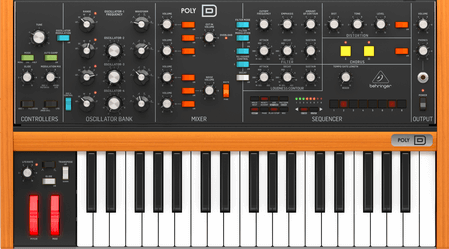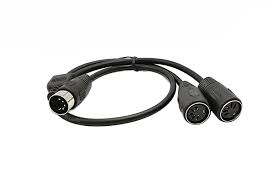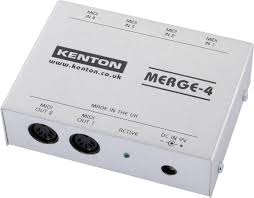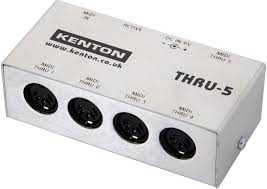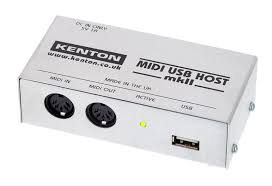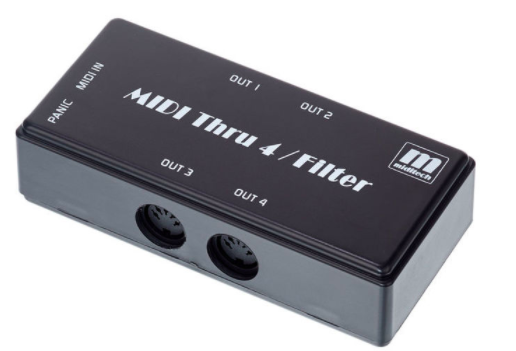Whether you’re just getting into synths or adding your third Eurorack, the world of synth clones can be confusing. Behringer’s synth clones have differences that are best appreciated side-by-side, which is exactly what you’ll find in this guide.
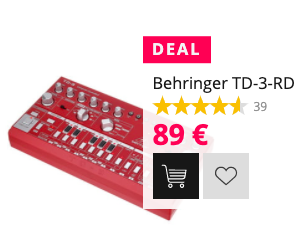
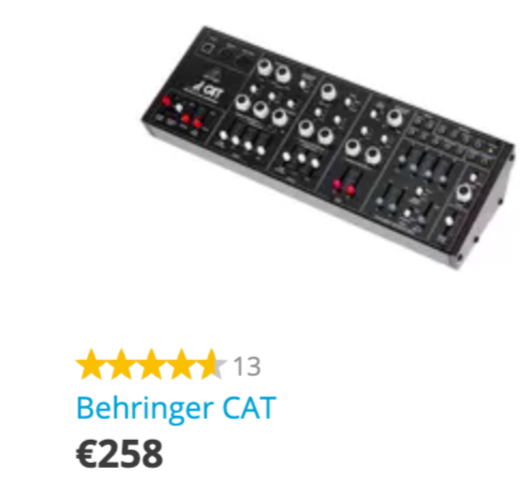
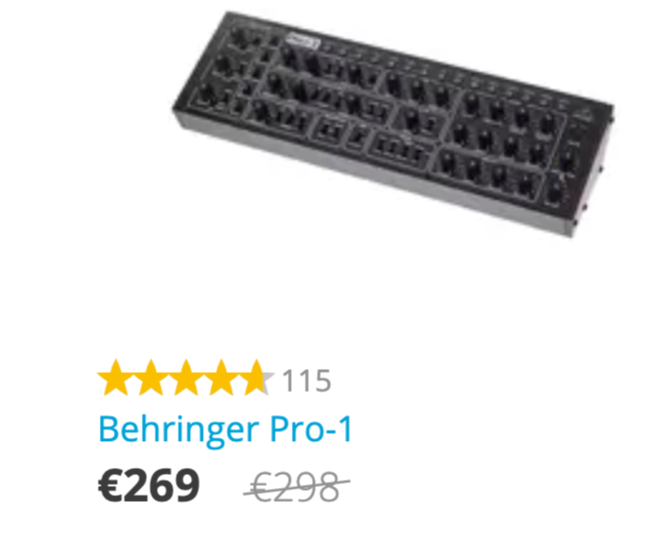
Behringer has been releasing a slew of analog synths that clone (or are modeled after) the classics. They’ve done an admirable job of retaining the sound – even the original glitches – of iconic synths.
Read below to learn about each synth individually and also see many comparisons.
We start out with the Eurorack and desktop synths, then we move on to the clones that also have keyboards.
Thomann.de currently has some great deals on their Behringer synths: Crave for €155, TD-3 for €129, Pro-1 for €269!

List of All Behringer’s Synths
Behringer is serious about synths. Here’s a list of all those currently being manufactured.
(Links to Behringer synths go to Behringer’s official page. Links in brackets go to official sites where possible.)
Eurorack and Desktop Clones
- Crave [Moog Mother-32 (2015)] from Thomann or Amazon
- Neutron [no precise model] from Thomann
- Model D – [Moog Minimoog Model D (1970)] from Thomann or Amazon
- Pro-1 [Sequential Pro One (1981)] from Thomann or Amazon
- K-2 – [Korg MS-20 (1978)] from Thomann or Amazon
- Cat [Octave Cat SRM-2 (1978)] from Thomann or Amazon
- Wasp Deluxe [Electronic Dream Plant Wasp Deluxe (1979)] from Thomann or Amazon
- TD-3 [Roland TB-303 (1982)] from Thomann or Amazon
Synths with Keyboards
- MS-1 – [Roland SH-101 (1982)]
- Vocoder VC-340 – [Roland VP-330 (1979)]
- Odyssey – [ARP Odyssey (1972)]
- Deepmind 6 and Deepmind 12 [Juno 60 (1982)]
- Mono/Poly [Korg Mono/Poly (1981)]
- Poly D [Moog Minimoog Model D (1970])
Drum Machines
- RD-6 [Roland TR-606 (1981)]
- RD-8 [Roland TR-808 (1980)]
Why go for a Behringer clone?
While synths have never fully gone out of style, there has been a resurgance in interest in classic analog synths recently.
But instead of paying thousands for a 20-40 year-old original, Behringer’s clones give you that sound plus contemporary options (like MIDI) at around $150-300.
The clones sound good. Even the original-only synth purists have to confess it. You can get a sound-alike piece of history with a warranty, so what’s not to love there?
Synth Econo-Mix
At Sound-EconoMix.com, we rate gear based on the three-part Econo-Mix:
- Time: How long does it take to learn the gear? Is it usable in a live situation?
- Space: how much room will this take up in its designated space (your desk, pedalboard, etc)?
- Finances: Do you get musical-value for the money? Does it retain resell value?
So, in terms of the Behringer synth clones, we would generally rate them like this:
- Time: Crave and Model-D are probably the most intuitive and beginner friendly. Neutron is a wonderfully complex synth. Most of the others are solidly at the intermediate level: perhaps not starter synths, but fine for someone who knows the Way of the Knobs.
- Space: with the exception of Crave (bigger) and TD-3 (smaller), all of these fit on a Eurorack. Crave certainly could have been a bit smaller and gained some portability without sacrificing accessibility.
- Finances: these synths are all exceptional deals. They are also holding up well over time and retaining resell value.
Other options
Buy an original: while this is generally much more expensive, in the case of the Korg MS-20 that is still in production and rather affordable. Most of the other synths are at least 3x the price of Behringer’s clone.
Go for a synth virtual instrument (VST) plugin: this is a move in the opposite direction, but hear us out. Arturia has made an incredible collection of synth and key VSTs, V Collection 7. They sound and look very good, and you can test drive the virtual synths and then get a physical one later.
How to Choose?
Behringer has a ton of analog synth clones. They all have their strengths and unique sounds, so how do you choose?
You might want to have a listen to the sound demos first. We’ve put nice sound demos at the beginning and end of each section to give you a tour of what that synth can do.
If you get excited, dive deeper into one of the tutorials. If the sound does nothing for you, move on down the list.
Comparison Chart of Behringer Eurorack Synth Clones
| Crave | Neutron | Pro-1 | Model-D | K-2 | Wasp | Cat | TD-3 | |
| Modelled after | Moog Mother-32 (2015) | N/A | Sequential Pro One (1981) | Moog Minimoog Model D (1970) | Korg MS-20 (1978) | Electronic Dream Plant Wasp Deluxe (1979) | Octave Cat SRM-2 (1978) | Roland TB-303 (1982) |
| Oscillator | 1: 2 waveforms | 2: 5 waveforms | 2 | 3: 5 waveforms | 2: 4 waveforms | 2 (digital): 2 waveforms | 2: 3-4 waveforms | 1: 2 waveforms |
| Polyphony | Mono (but (quasi-)para-phonic with LFO and filter as voices) | paraphonic | Monophonic | Duophonic capacities | Duophonic capacities | Mono | Duophonic capacities | Mono |
| VCO Chip | 3340 | CEM3340 | CEM3340 & 3320 | CEM3046 | ? | ? | CEM3340 | ? |
| Patch Bay/Jacks | 18 in, 14 out | 32 in, 24 out | 13-point | 13-point | 25-point | 4 jacks | 13-point | 5 jacks |
| Sequencer | 32-step 64 patterns | — | 64-note | — | — | — | — | 16-Step sequencer with 250 pattern memory |
| Filter | 24 dB low-pass filter with resonance | 12 dB state variable filter with resonance | 24 dB low-pass filter with resonance | 24 dB ladder filter with resonance | 2: 24 dB/octave filters | 12dB Slope (2-pole) with resonance | 24dB, 4 Pole with SSM2044 chip | 4-Pole low-pass filter with resonance |
| Arpeggiator | 8 patterns | — | 3 patterns | — | — | — | — | — |
| Audio Input | yes | yes | yes | yes | yes | yes | yes | yes |
| Effects | — | delay, overdrive | — | — | — | — | distortion |

Behringer Crave
Behringer’s Crave is a go-to starter synth if you’re wanting to jump into the analog world. It is a stand-alone unit, with buttons so you can enter your notes without an external keyboard.
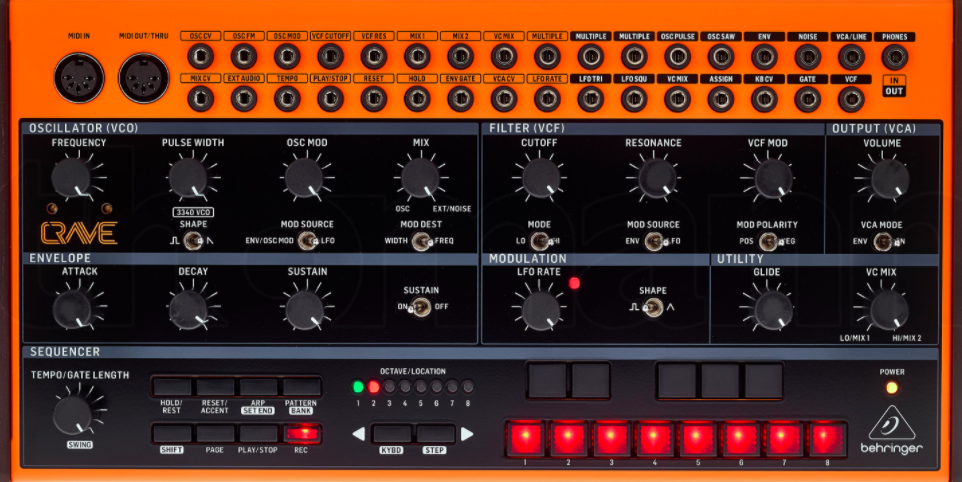
Crave also has a good 32-step sequencer and arpeggiator with 8 different patterns. These factors put it ahead of some of its more expensive siblings.
While it only has one oscillator, its filters, envelopes, and 32-point patch bay will certainly not leave you bored.
If you compare the Crave to the synths it’s modeled on, you’ll see it’s a steal. Grab a pair of headphones, and you’re ready to make music wherever you are.
Here’s a couple demonstrations showing you what kind of sounds you can get out of a Crave:
Crave Specs
- VCO based on CEM3340
- Sawtooth and pulse waveforms with pulse width modulation
- Noise generator
- 24 dB ladder filter with resonance, switchable between low pass and high pass
- ADSR envelope
- Analog LFO with triangular and rectangular waveforms
- Step sequencer with 32 steps and 64 memory slots
- Arpeggiator
- Patch panel with 18 inputs and 14 outputs for expanded sound options and for connecting to other modular synthesizers & sequencers
- Audio input for sound processing external sources
- Poly-chaining of up to 16 devices possible
- 3.5 mm jack headphone output
- MIDI In/Out
- USB-B port
- Dimensions (W x D x H): 320 x 164 x 47 mm
LoopOp is now going to show you how to get the most out of a Crave (and also provide an intro to analog synths along the way):
Pros:
- Ideal starter analogue synth
- Sturdy build and knobs
- Great patch bay at this price range
- MIDI in and through
Cons:
- buttons are clicky, not great quality
- only one oscillator, two waveforms
- Some wasted space (better uses Noise-Oscillator Mix knob?)
Filter and LFO can basically be played as a voice, making the Crave (quasi-)para-phonic.
Modelled after: Moog 32 and Prophet-5
Internally, Crave is as good as its more expensive Eurorack siblings. It has:
- same filter as Model D
- Same as Neutron

And here’s about half an hour of sonic dessert with the Crave:
Behringer Neutron
The Neutron is unique among these Behringer synths because it’s, well, unique. (It’s not modelled from a classic synth.)

Neutron has some major advantages over many of the other Behringer synths. Unlike the Crave, you’re not going to outgrow it too quickly. But at the same time, it has a very intuitive interface with some easy to use options and effects (such as delay and overdrive).
It also has an enormous patch bay, allowing you to really customize your sound. Additionally, it has a companion software allowing you to edit additional parameters.
As a unique, non-modelled synth, it might be that the Neutron is the darling of Behringer. In addition to the software, they’ve made a firmware update giving it even more options.
Here’s a good tour of Neutron’s sounds in a little jam:
Specs
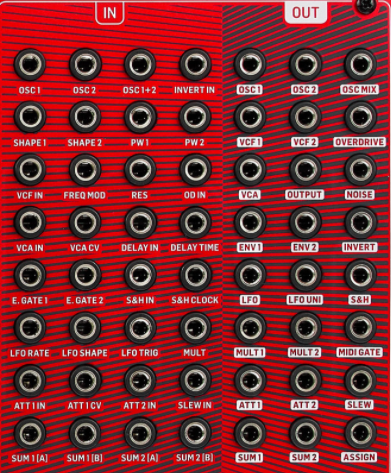
- Analogue signal path
- 2 VCOs with CEM3340 chips
- Continuous transition between 5 waveforms
- Paraphony mode for two-part sounds
- Multimode VCF with resonance
- 2 Analogue ADSR envelopes for VCF and VCA
- Flexible LFO with 5 waveforms and MIDI sync
- Analog BBD delay
- Noise generator
- Overdrive circuit
- 43 Control elements for direct access
- Jack matrix with 32 inputs, 24 outputs for enhanced sound and connectivity with other modular synthesisers & sequencers
- Can be used as a complete Eurorack synthesiser voice (width: 80 HP)
- MIDI In / Thru and USB-MIDI
- 6.3 mm audio input for sound processing from external sources
- 6.3 mm headphone output
- 6.3 mm line output
- Dimensions: 94 x 424 x 136 mm
- Weight: 2.0 kg
LoopOp’s complete tutorial, review, patch demos, and critique.
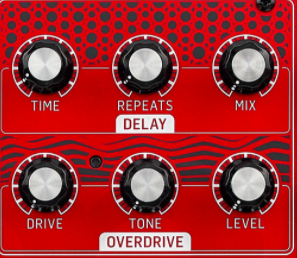
Pros
- Perhaps most bang-for buck in this price range
- Intuitive, yet very versatile
- Duophonic modes (basically 3)
- Huge patch bay
- On-board delay and overdrive
- Control software editor
Cons
- No sequencer or arpeggiator
- Can’t enter notes without external keyboard
Is the Neutron a Clone?
Behringer’s Neutron is not a clone exactly. While it is comparable to other synths, we don’t see that same 1-to-1 correspondence that we see with the Crave (to Moog’s Mother-32) and all of the synths below.
That might make the Neutron more neutral to some ears. Many synth lovers come to Behringer for a cheaper, more reliable version of a classic synth, and you don’t get that with the Neutron.
But what you do get is an immensely versatile synth that also plays very well with others.


To hear what you can do with that patch bay, take a sound cruise with Anton Anru:
Comparison Between Crave and Neutron
Crave and Neutron are two of Behringer’s most popular synths. Sometimes they get positioned as Behringer’s two starter synths, but we think only one of them is actually good for beginners.
Let’s have a quick look at their specs side-by-side
Crave
- 1 VCO based on CEM3340
- 2 waveforms (sawtooth and pulse) with pulse width modulation
- Monophonic
- 25 Control elements for direct access
- Noise generator
- 24 dB ladder filter with resonance, switchable between low pass and high pass
- 1 ADSR envelope
- Analog LFO with triangular and rectangular waveforms
- Step sequencer with 32 steps and 64 memory slots
- Arpeggiator (8 patterns)
- Patch panel with 18 inputs and 14 outputs
- Audio input for sound processing external sources
- —
- —
- Poly-chaining of up to 16 devices possible
- 3.5 mm jack headphone output
- MIDI In/Out
- USB-B port
- Dimensions (W x D x H): 320 x 164 x 47 mm [too large for Eurorack]
- —
- Weight: 1.5 kg
Neutron
- 2 VCOs with CEM3340 chips
- Continuous transition between 5 waveforms
- Paraphony mode for two-part sounds
- 43 Control elements for direct access
- Noise generator
- Multimode 12 dB State Variable Filter with resonance (cutoff Frequency 10 Hz – 15 kHz)
- 2 Analogue ADSR envelopes for VCF and VCA
- Flexible LFO with 5 waveforms and MIDI sync
- —
- —
- Patch panel with 32 inputs, 24 outputs
- Audio input for sound processing external sources
- Analog delay
- Overdrive circuit
- Poly-chaining of up to 16 devices possible
- 6.3 mm headphone output with volume control
- MIDI In / Thru
- USB-MIDI
- Dimensions: 94 x 424 x 136 mm [fits Eurorack]
- 6.3 mm line output
- Weight: 2.0 kg
In short, Crave has these advantages over Neutron:
- cheaper
- sequencer
- arpeggiator
- completely stand alone – no need for external keyboard
So, if you’re looking for a stand-alone analogue synth you can carry with you, Crave is a good choice. (Although if portability is what you’re looking for, Korg’s Volca series might fit the bill better.)
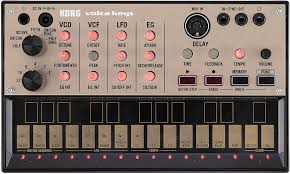
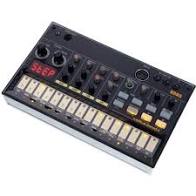
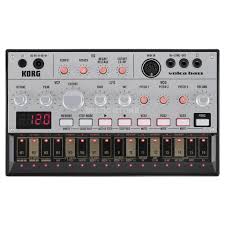
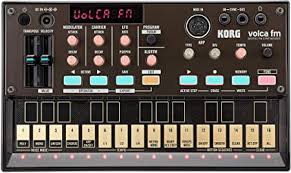
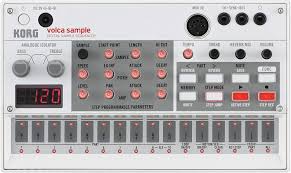
But, if you already own an external keyboard like the Arturia Keystep, you might think about pitching in the extra dough for the Neutron or another one of the units below.
A Keystep has an 8-pattern arpeggiator and 64 step sequencer (double Crave’s), which automatically gives you most of what you’d be missing with the Crave.
But you have a much wider sound palette with the Neutron: a 2nd oscillator and envelope, huge patch bay, plus onboard effects.
The Crave is the perfect starter synth, and its limitations are also strengths. It delivers that Mother-32 sound that never gets old.
The Neutron has an incredibly wide sonic palette, but that comes at the cost of lots of twisting and plugging and unplugging.
If you’re starting out with synths, you might have a hard time finding (and then re-finding) the sound you want with the Neutron due to the sheer number of options.
And if you want more than one oscillator, there are other synths in Behringer’s lineup, like the Model D and Cat, that are also relatively easy to learn.
Model-D
With an incredibly logical layout and a classic sound, the Model-D is another tempting clone from Behringer.

Specs
- Analogue signal path (VCO mixer-VCF-VCA)
- 3 VCOs with 5 waveforms
- 24 dB ladder filter with resonance
- High pass / low pass modes
- Analogue LFO with rectangle / triangle waveforms
- Monophonic sound generation with polychain option for up to 16 voices
- Noise generator
- Overdrive circuit
- Semi-modular with 13 patch points
- 49 Control elements for direct access
- Can be used as a full Eurorack synthesiser voice (width: 70 HP)
- 3.5 mm audio input for sound processing from external sources
- 2 Line outputs (6.3 mm) with different levels
- 3.5 mm headphone output
- MIDI In / Thru and USB-MIDI
- Dimensions: 90 x 374 x 136 mm
- Weight: 1.7 kg
Pros:
- Legendary synth clone of the Minimoog at a fraction of the price of the original
- Hardware improvements on Moog’s original
Cons:
- There have been some issues with triggering MIDI in rapid succession. Apparently the Model-D is having a problem picking these up when triggered manually or with an arpeggiator.

The Model-D’s place in music history
The Model D is celebrated (and vilified) for being very faithful, $300 clone of a Minimoog that would cost you thousands. Whatever folks want to say about it, they can’t really say it’s not a good clone.
The Minimoog has been in constant use since it came out in 1971. You’ve heard it in these songs:
- “Flashlight” by Parliament (see article, “Bernie Worell & The Minimoog Model D“
- Abba and tons of disco makers
- Kraftwerk‘s Autobahn (1974) and The Man-Machine (1978)
- Dr. Dre’s The Chronic
Read: “10 Musicians Who Made the Minimoog the Most Influential Mono Synth of All Time“
D is for Duophonic?
You can upgrade your Model-D to a duophonic synth even if you’re not super technical. LoopOp walks you through the steps.
Model D Demos
Of course, best is to just hear it in action!
Behringer Pro-1
The Pro-1 is one of the more popular Eurorack units, and that might be because of the versatility of sounds you can make with it.


Everything is laid out before you in a way that makes great sense. This includes your ability to dial in your beginning sound by choosing Saw, Pulse, and/or Triangle waves with a flip of the switch.
Even in ways that it’s different from standard synths (for example, its use of the modulation matrix), it still makes good sense within the framework of the synth.
The Pro-1 hits many of the important points for a stand-alone synth (although you’ll need a keyboard). You have a good 64-note sequencer, 3-pattern arpeggiator, 2 envelopes, and a nice-n-dirty filter.
Have a listen to Limbic Bits demo of patches:
Specs
- Dual VCO design based on CEM3340
- Sawtooth and pulse waveform for VCO A
- Sawtooth, Triangle and Pulse waveform for VCO B
- Pulse Width Modulation
- Noise generator
- 24 dB low-pass filter with resonance
- 2 ADSR envelopes for VCF and VCA
- LFO with sawtooth, triangle and rectangle waveform
- 2 Modulation buses
- 2 Glide modes
- Sequencer with 64 notes storage capacity (8 octaves plus another using frequency)
- 3-pattern Arpeggiator
- Audio input for sound processing external sources
- Can be used as a complete Eurorack synthesizer voice (width: 80 HP)
- Poly-Chain function for connecting up to 16 devices
- 6.3 mm Line output
- 3.5 mm Jack stereo headphone output
- MIDI In / Thru and USB-MIDI
- Dimensions: 95 x 424 x 136 mm [Eurorack compatible]
- Weight: 1.8 kg
Here’s LoopOp’s full review, tutorial, and some patch ideas:
And another review and demo by Pete Midi. “It maximizes the product between flexibility and ease of use.”
Pros:
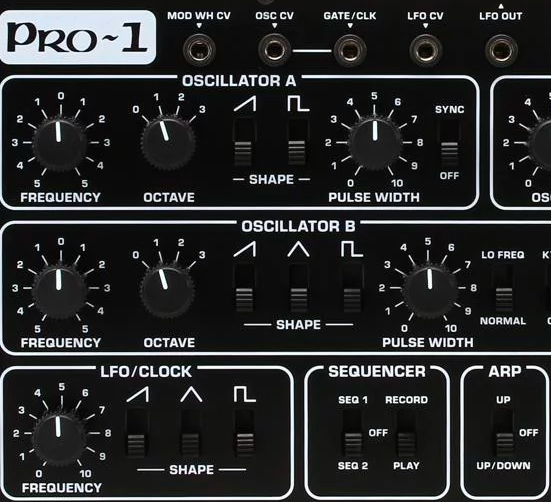
- Intermediate-friendly synth that grows with you
- Killer modulation matrix
- Switchable drone
- Duo/para-phonic
- Patch bay
- Fat bottom end
- 16-voice Poly Chain
Cons
- Limited oscillator variety
- “Unique” sequencer
- Limited arpeggiator
Modeled on: Sequential Pro One (1981)
Used by:
Depeche Mode, New Order, Soft Cell, Prodigy
Take a ride on the Pro-1 with Robert Iver:

Trivia: What Synths Did Prince Use in the 80s?
- Oberheim OB-X
- Polymoog
- Minimoog
- Clavinet
- Fender Rhodes
- ARP Pro Soloist
- ARP Omni 2
- EMAX II
- DX7
Source: thecurrent.org
Pro-1 vs. Model D?
At this point you might now feel torn between the Model D and Pro-1. They have a lot in common, and this is a more difficult decision than weighing the Crave against Neutron.
Spec Comparison
Pro-1

- Dual VCO design based on CEM3340
- Sawtooth and pulse waveform for VCO A
- Sawtooth, Triangle and Pulse waveform for VCO B
- Pulse Width Modulation
- Noise generator
Overdrive circuit- 24 dB low-pass filter with resonance
- 2 ADSR envelopes for VCF and VCA
- LFO with sawtooth, triangle and rectangle waveform
- 2 Modulation buses
- 2 Glide modes
- Sequencer with 64 notes storage capacity (8 octaves plus another using frequency)
- 3-pattern Arpeggiator
- Audio input for sound processing external sources
- Can be used as a complete Eurorack synthesizer voice (width: 80 HP)
- Poly-Chain function for connecting up to 16 devices
- 6.3 mm Line output
- 3.5 mm Jack stereo headphone output
- MIDI In / Thru and USB-MIDI
- Dimensions: 95 x 424 x 136 mm
- Weight: 1.8 kg
Model D

- Analog signal path (VCO mixer-VCF-VCA)
- 3 VCOs with 5 waveforms
- Noise generator
- Overdrive circuit
- 24 dB ladder filter with resonance
- High pass / low pass modes
- LFO with rectangle / triangle waveforms
- Monophonic sound generation with polychain option for up to 16 voices
sequencerarpeggiator- Semi-modular with 13 patch points
- 49 Control elements for direct access
- Can be used as a full Eurorack synthesizer voice (width: 70 HP)
- 3.5 mm audio input for sound processing from external sources
- 2 Line outputs (6.3 mm) with different levels
- 3.5 mm headphone output
- MIDI In / Thru and USB-MIDI
- Dimensions: 90 x 374 x 136 mm
- Weight: 1.7 kg
The Model-D has three oscillators as opposed to Pro-1’s two. This tends to give the Model-D a thicker sound out of the gate.
But then the Pro-1 has more (and more complex) tone-shaping parameters once you get past the oscillator section.
As you can tell from the front panels, the Pro-1 is a much busier-looking synth. While this does open up sound-sculpting, it makes it less beginner-friendly.
In contrast, the Model-D has a streamlined, very logical panel. You can quickly dial in something nice – from soothing to raunchy.
You might say that the Mode- D is going to retain that classic Moog sound throughout the changes. Whereas the Pro-1 is a bit more versatile and not quite as characteristic.
The Pro-1 has a sequencer and oscillator (both very basic), which is one less thing for your keyboard to have to keep going.
Pro-1 is loved for providing some fat, heavy bass lines. We hear it used in New Wave and 80s and 90s industrial music, if that gives you a sense of sound.
The Model-D comes in with its distinctive voice, and it has a clear history in the foundations of funk. but also in Kraftwerk’s background.
In short, the sonic versatility of the Pro-1 comes at a cost of lots of knobs (so perhaps not best for noobs). The Model-D will sound like a Model-D regardless of how much you twist.
So perhaps it’s best just to listen to a comparison:
Behringer Cat
The Cat is a bit of an underdog (…undercat?) in that it doesn’t get some of the attention of some of Behringer’s other synths. But we think that it deserves your ear, because it can generate some truly nasty sounds.

Check out this demo to see that this is one gritty kitty:
The Cat is a different kind of animal. While the controls all make sense and have a good inner-organization, it doesn’t work exactly the same way as most other synths. So that means you’ll have to re-learn a bit to get a lot out of the Cat.
From the other side, what you learn from using the Cat might not translate well to most other synths. So it’s not really a great starter synth, in the sense that it doesn’t provide you with as many transferable skills as, say, the Crave or Model-D.
But, within the world of the Cat, you have immense control over the sound your producing without using a patch bay.
Oh, and it has a small patch bay, too.
Cat is great in that you have a lot of control over the sound:
- 2 VCOs (control 3-4 waveforms per oscillator)
- 7 mixable waveforms
- 2 Envelopes
- Duophonic mode
Specs
- VCO 1 with 4 miscible waveforms (sawtooth, triangle, pulse and suboctave)
- Pulse width modulation and two adjustable modulation sources
- VCO 2 with 3 mixable waveforms (sawtooth triangle and suboctave) and two adjustable modulation sources
- Low pass filter with resonance, two adjustable modulation sources and adjustable key tracking
- Two analogue envelopes (ADSR and AR)
- Analogue LFO
- Noise generator and sample & hold unit
- Duophone playable
- 3.5 mm Audio input for sound processing from external sources
- Can be used as a full Eurorack synthesiser voice (width: 70 HP)
- Poly chain function for connecting up to 16 devices
- Main out via 3.5 mm jack and 2x 6.3 mm jack (high and low level)
- Headphone output: 3.5 mm jack
- MIDI In / Thru and USB-MIDI
- Dimensions: 87 x 374 x 136 mm
Pros:
- Good housing (metal with wood sides) and quality hardware
- Nice LPF 24dB, 4 Pole with SSM2044 chip
- Easy blend of waveforms in both VCOs with slides: makes for unique tones
- Fat low end and sub octave slide
Cons:
- Lots of sliders as opposed to knobs
- General peculiarities/idiosyncracies
For a really in-depth of the review, including a historical overview, watch Keen on Keys video:
The Cat definitely has some “character.” Some would call these flaws or inconsistencies; others would say they make it unique and interesting.
To get another listen to some patch ideas with the Cat, here’s a video from Limbic Bits:
And here’s a critical review that calls attention to some of these peculiarities.
K-2
The K-2 is definitely not starter synth, but it has tons of options for sculpting your sound in many directions.
There is more debate on the K-2 than other clones as to how close it gets to the model (Korg MS-20). But a real strength of this unit is its lusciously versatile filters.

Specs
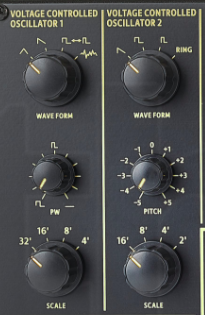
- Monophonic sound generation
- 2 VCOs with 4 waveforms and ring modulation
- VCO Mixer
- Resonant high-pass and low-pass filters
- LFO with triangular, sawtooth and rectangular waveforms
- 2 Analogue envelopes for VCA and VCF
- Signal processor with amplifier
- High-pass and low-pass filters and envelope followers
- Semi-modular design allows access to all components of the sound generation via 25 sockets (3.5 mm jack)
- Can be used as a complete Eurorack synthesizer voice (width: 80 HP)
- Poly-chain function for connecting up to 16 devices
- 2 Line outputs: 6.3 mm Jack and 3.5 mm jack
- Stereo headphone output: 3.5 mm Jack
- MIDI In/Thru and USB MIDI
- Dimensions: 95 x 424 x 136 mm
- Weight: 1.8 kg
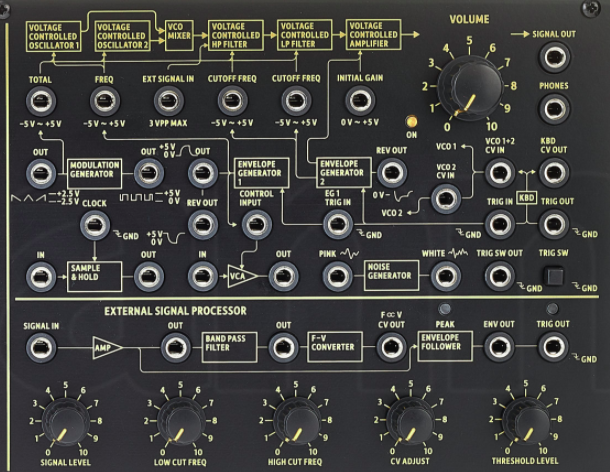
LoopOp gives a great, in-depth review and some killer tips for opening up the sound available here.
Pros:
- 2 filters, and both unique (maintain bass)
- Relatively intuitive: good intermediate synth
- large patch bay
- basic Synth Tool software
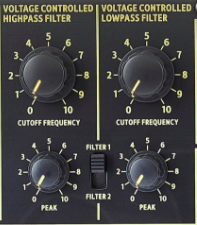
Cons:
- Arguably the least successful “clone” in terms of copying sound of original (Korg MS-20)
- New Korg MS-20 is only marginally more expensive and includes keyboard
- Outside of the two filters, it offers less originality compared to Behringer’s other synths
Modeled on: Korg MS-20 (1978)
Used by: Arcade Fire, Aphex Twin, Foals, Portishead
Limbic Bit’s demo:
Wasp Deluxe
The Wasp is an aggressive mono synth. It thrives as a lead and for sequences that won’t want to be ignored.
It has a less complicated layout than some of its siblings, which makes it more friendly for beginners. But the sound is more of a niche sound: it might fit well within your arsenal of synths, but it’s probably not really what you’d want as your only synth.
The Wasp Deluxe is often priced a bit cheaper than Behringer’s other Eurorack synths.
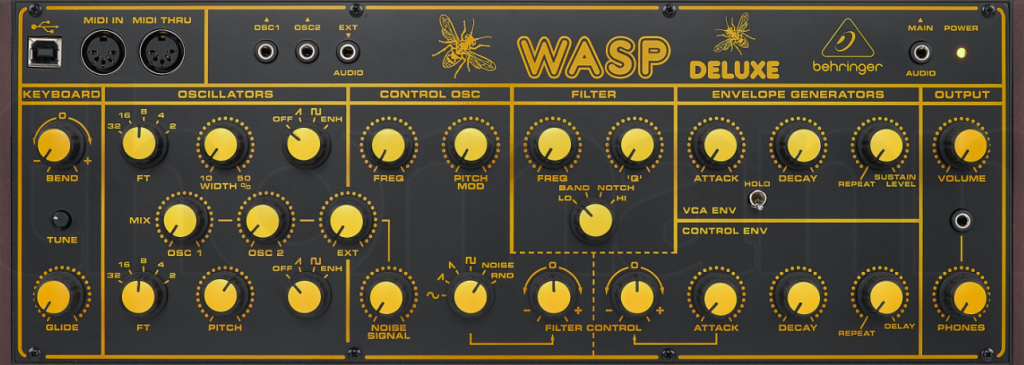
Here’s an intro by Behringer themselves:
And a full tutorial and demo:
Specs
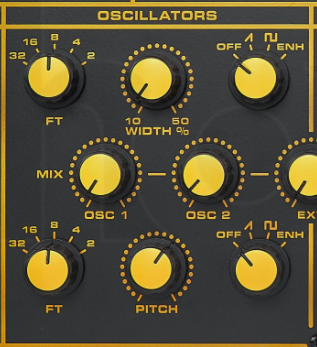
- Authentic reproduction of the original “Wasp Deluxe” circuit with coordinated transistors and JFETs.
- Digital dual oscillator with sawtooth and pulse waveforms, adjustable pulse width and noise
- Analogue multimode filter with resonance and selectable characteristics: Low pass, high pass, band pass and notch
- LFO with 6 waveforms for pitch and filter modulation
- Can be used as a full Eurorack synthesiser voice (width: 70 HP)
- 2 Analogue envelopes for VCF and VCA
- 3.5 mm audio input for sound processing from external sources
- Polychain function for connecting up to 16 devices
- 3.5 mm jack outputs for oscillator 1 & 2
- Main out via 3.5 mm jack and 2x 6.3 mm jack (high and low level)
- Adjustable 3.5 mm headphone output
- MIDI In / Thru and USB-MIDI
- Dimensions: 87 x 374 x 136 mm
- Weight: 1.6 kg
- Power adapter included (12 V DC, 1000 mA)
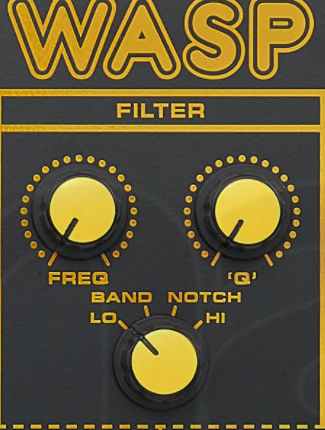
Pros:
- Uncomplicated, clear layout
- Great aggressive sounds
- Screamin’ filters
- Often priced below other Euroracks
Cons:
- Not very flexible or diverse in sounds
- Limited octave range
Modeled on: Electronic Dream Plant Wasp Deluxe (1979)
Used by: the Eurythmics, Duran Duran, 808 State
For an unboxing, walk-through, and demo, watch Starsky Carr’s video:
And for another experience with what sounds you can get out of the Wasp, have a listen with Limbic Bits:
And another demo showing what the Wasp’s buzz is all about:
Behringer TD-3
Sometimes failures open doors. Roland’s TB-303 was a failed bass guitar replacer-box and flopped quickly. But then others figured out it can make some killer sounds.
Known primarily with its connection to Acid techno, Behringer made its TD-3 to let you see what you can come up with.
The TD-3 is certainly unique in Behringer’s synth clone lineup. It’s super portable, has keys for inputting, and a sequencer.
It’s simple enough for beginners, but it might not have a diverse enough sound palette to keep you interested if it’s your only synth.

Specs
- Fully analog signal path from VCO, VCF and VCA
- VCO switchable between sawtooth and rectangular waveform
- 4-Pole low-pass filter with resonance
- VCF envelope intensity and envelope decay adjustable
- Adjustable accent
- Integrated distortion with tone control
- 16-Step sequencer with 250 pattern memory locations
- Poly-chaining of up to 16 devices possible
- Audio input for sound processing of external sources: 3.5 mm Jack
- Sync In & CV/gate outputs: 3.5 mm Jack
- Stereo headphone output: 3.5 mm Jack
- Line output: 6.3 mm Jack
- USB-MIDI and MIDI In/Out
- Colour: Silver, Blue, Red, Green, Yellow
- Includes power supply (9 V DC)
- Dimensions (H x W x D): 56 x 305 x 165 mm
- Weight: 0.8 kg
Pros:

- Excellent copy at minuscule price
- Easily portable
- Good build-quality overall (plastic chassis)
- Built-in DS-1 distortion
- Instant Acid techno box!
Cons:
- Not very diverse sonically (but that’s not its job)
- Some complaints about difficulty of learning sequencer
Used on:
- Josh Wink‘s “Higher State of Consciousness” (1995)
- Phuture‘s “Acid Tracks” (2000)
- Orange Juice‘s “Rip It Up” (post-punk)
- Charanjit Singh‘ Synthesizing: Ten Ragas to a Disco Beat (1982)
One great thing about the TD-3 is that it plays well with others. Here Anton Anru parters it with a Crave.
And the TD-3 has some cool functions with its filter in jack:
Deepmind 12D
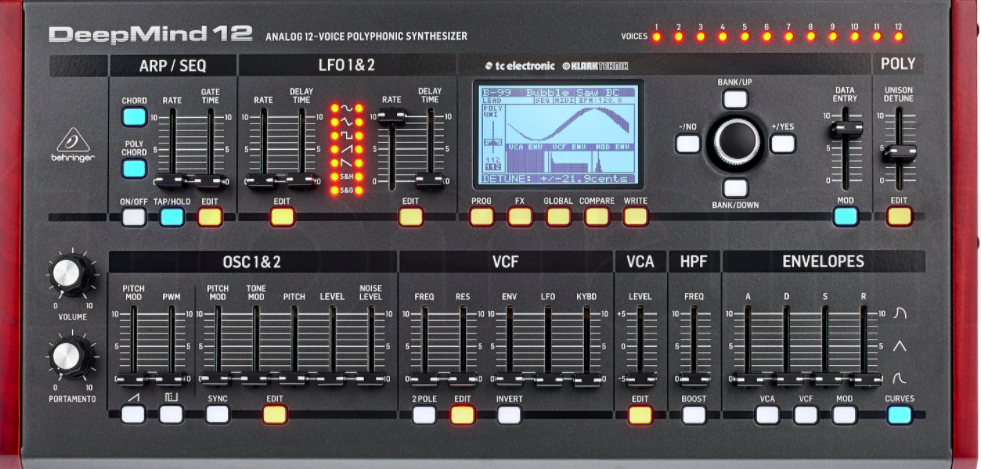
Specs
- 4 FX Engines powered by tc electronic & Klark Teknik
- 24 Oscillators – two OSCs and LFOs per voice
- 3 ADSR generators
- Switchable 2- or 4-pin low-pass filter per voice
- High pass filter
- 8-Channel modulation matrix
- 32-Step control sequencer
- Envelope depth
- Key tracking
- Remote control via iPad / PC / Mac and selected Android apps via USB, MIDI or built-in wi-fi
- 26 Controllers and one switch per function for direct access to all important parameters in real time
- 1024 Program memories
- Built-in and adjustable wi-fi client
- LC-display
- Dimensions: 120 x 457 x 225 mm
- Weight: 4.2 kg
Behringer Mono/Poly
Breaking News: Behringer announced on November 18, 2020 that they are now shipping out their much-awaited Mono/Poly.
The manufacturers’ suggested price is $699
As a clone of Korg’s Mono/Poly (1982), we can expect more of what we’ve already seen from the Behringer synth clones:
- faithful modelling of the original sound
- some additional options not on the original
Specs
These are the specs that are sure so far. Behringer has not released official specs yet.
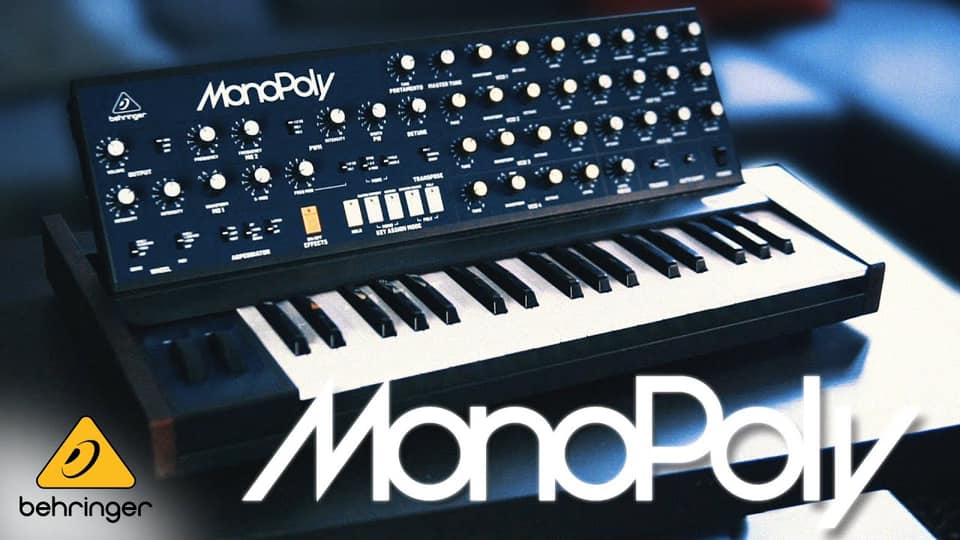
- 4 Oscillators with 4 waveforms: triangle, saw, pulse-width, and pulse-width modulated
- Monophonic, Unison and Poly modes (up to 4 notes per chord)
- Chord memory function
- 24/db octave exponential low-pass VCF with resonance
- 37 Full-Size, semi-weighted Keys
- Dual analog LFOs
- BBD Stereo Chorus
- Distortion
- 32-Step Sequencer
- Arpeggiator: with on/off/latch control, up/down/up-down pitch control, and 1/2/full keyboard control
- MIDI In, Out and Thru
- CV patch points
Poly D
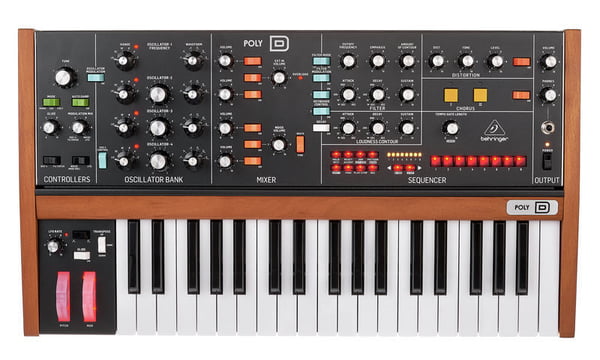
Specs
- 37 Full-size velocity-sensitive keys
- 4-Voice polyphonic design with mono-, unison- and polyphonic mode
- 4 Analogue VCOs with triangular-, sawtooth- and pulse waveforms
- Noise generator with white and pink noise
- 24 dB Ladder filter with resonance
- Switchable low pass-/high-pass filter
- Analogue LFO with square-/ triangular waveforms
- 2 ADS envelope for VCF and VCA
- Analogue BBD stereo chorus
- Integrated distortion with tone control
- 32-Step sequencer
- Arpeggiator
- Pitch- and modulation wheel
- Adjustable control panel and 84 controls for intuitive operation
Side note: Consider Korg Minilogue XD
When we get out of Behringer’s Euroracks, they become less financially competitive. One serious contender is Korg Minilogue XD.
The Minilogue is a unique hybrid synth: it has 2 analog oscillators and a digital one. We know, we know…you’re not reading this page for digital synths, but the Minilogue does provide two fully analog oscillators plus some enormous flexibility thanks to the third digital one. It’s worth considering.
One of its major advantages over most of Behringer’s synths is the ability to store presets. While fast re-patching is a joy to many synth-lovers, if you need to switch fast, Korg’s preset storing might be a necessity.
Korg is also allowing 3rd party plugins to be added to the Minilogue. So you can download tons of new reverbs, delays, flangers, and so on.
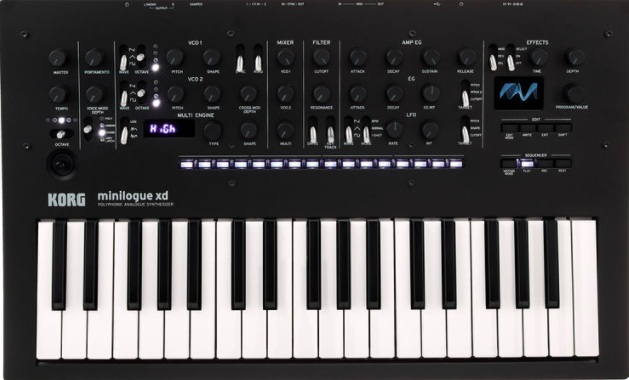
Odyssey
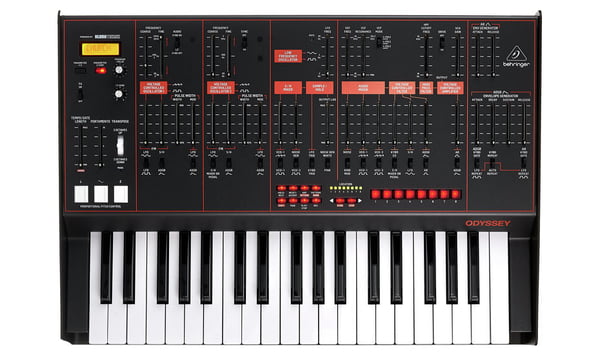
Specs
- 37 Full-size keys
- Monophonic/Duo-phonic synthesizer
- Controls: octave +/-, pitch bend, modulation
- 2 VCOs with sawtooth and square/pulse
- VCO sync
- VCO pulse-width modulation
- Noise generator
- Ring modulator
- Low-pass filter with resonance
- 3 Selectable filter circuits
- Adjustable high-pass filter
- Switchable overdrive
- 1x AR- and 1x ADSR envelope
- VCO 1 can be used as LFO
- Digital effects section
- 32-Step sequencer
- Arpeggiator
MS-1
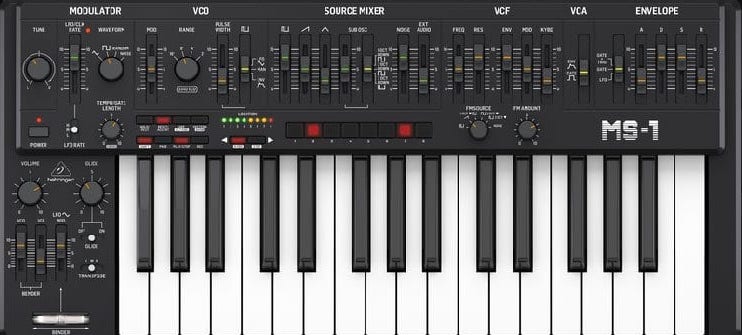
Specs
- Keyboard with 32 semi-weighted keys
- Analogue VCO – 3340-based
- 4 Mixable waveforms: Square (with adjustable pulse width), sawtooth, triangle and square sub-oscillator (switchable between -1 octave and -2 octaves)
- Noise generator
- Resonance-capable low-pass filter
- FM Filter possible via VCO waveforms
- ADSR envelope
- LFO with wide frequency range
- Arpeggiator and programmable step sequencer
- Glide
- Bender with assignment to VCO, VCF and LFO intensity
- Dimensions: 85 x 569 x 267 mm
- Weight: 6.3 kg
- Colour: Black
- Includes modulation knob, shoulder strap and external power supply (9 V DC / 1700 mA)
Vocoder VC340
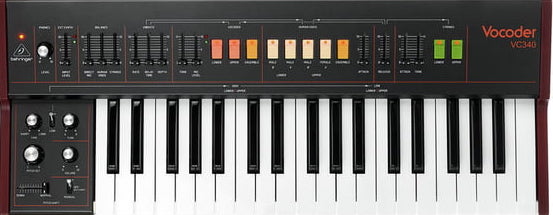
Specs
- Analogue vocoder and string ensemble synthesiser
- Keyboard with 37 semi-weighted and velocity sensitive keys
- “Human Voice” (Male and Female) and “Strings” sections mixable for classic string and choir sounds
- Analogue vocoder with tone control
- BBD chorus for ensemble effects
- Vibrato LFO
- Pitch shift fader
- Metal case with wooden side parts
- Dimensions (H x W x D): 103 x 649 x 257 mm
- Weight: 6.6 kg
Deepmind 6
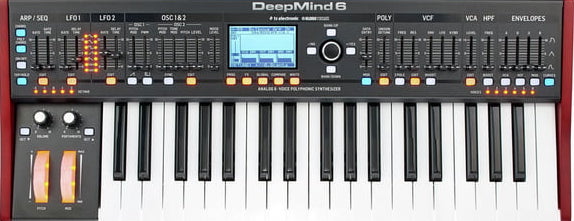
Specs
- 37 Semi-weighted full-size velocity-sensitive keys with aftertouch
- 4 FX Engines (powered by tc electronic & Klark Teknik)
- 12 Oscillators – 2 OSCs and LFOs per voice
- 3 ADSR generators
- 26 Controllers and one switch per function for direct access to all important parameters in real time
- Switchable 2- or 4-pole low-pass filter per voice
- High-pass filter
- 8-Channel modulation matrix
- 32-step control sequencer
- Envelope depth
- Key tracking
- Remotely control via iPad/PC/Mac and selected Android apps via USB or MIDI
- 1024 Program memories
- LCD display
- Dimensions (W x D x H): 650 x 260 x 105 mm
Deepmind 12

LoopOp gives a great (and largely favorable) tutorial and review of Deepmind 12 (though most of what he says is relevant to the Deepmind 6 and 12D).
Specs
- 49 Semi-weighted full-size keys
- Velocity-sensitive keys with aftertouch
- 4 FX Engines powered by tc electronic and Klark Teknik
- 24 Oscillators – 2 OSCs and LFOs per voice
- 3 ADSR generators
- Switchable 2- or 4-pole low-pass filter per voice
- High-pass filter
- 8-Channel modulation matrix
- 32-Step control sequencer
- Envelope depth
- Key tracking
- Remotely control via iPad/PC/Mac and selected Android apps via USB, MIDI or built-in wi-fi
- 26 Controllers and one switch per function for direct access to all important parameters in realtime
- 1024 Program memories
- Built-in and adjustable wi-fi client
- LC display
- Dimensions (W x D x H): 822 x 257 x 103 mm
- Weight: 8.4 kg
Pros:
- Software app is very helpful
- Great built-in effects (can be saved)
- Somewhat limited tonal variety
Cons:
- No real sequencer
Limbic Bits has a great demo of some of the lush ambiance you can make with the Deepmind:
Behringer Synth Comparison Videos
Now that you have a sense of what each of these synths can do individually, have a listen and look at them side-by-side.
Robert Ivers produced two great videos showing the Behringer Pro-1, Model D, and K-2 side-by-side.
And Rik Marston gives a great, simple side-by-side comparison of the Odyssey, Pro-1, Model D, Wasp Deluxe, and DeepMind 6:
And an enormous hats off to Inside Synthesis for making a song with 12 Behringer synths!
So, which should you buy?
Now that you’ve read, listened, and watched, you might be ready to pull the trigger.
Of course, we can’t tell you which to buy, but here’s some things to consider:
Starter synths: The Crave and Model-D are both great for beginners. They’re relatively easy to come to terms with, but that doesn’t mean you’ll get bored.
They also have good jacks for synching with other synths and modules.
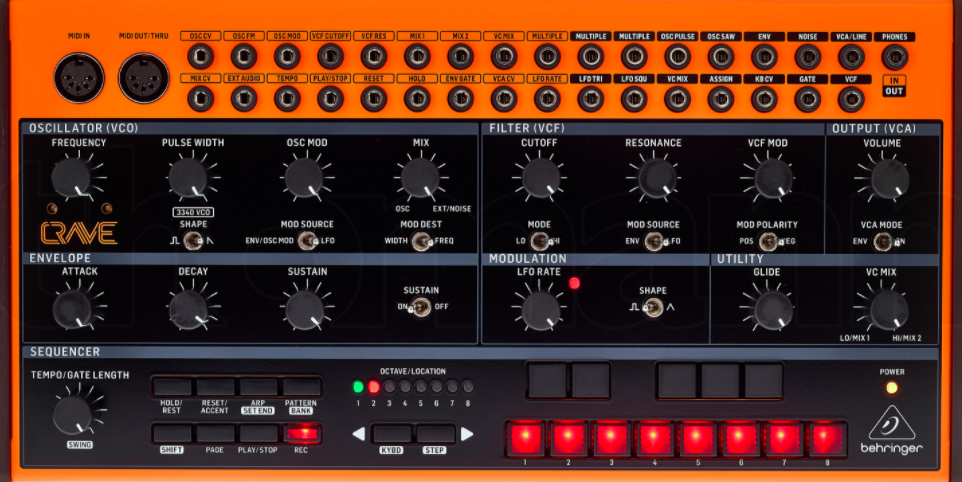
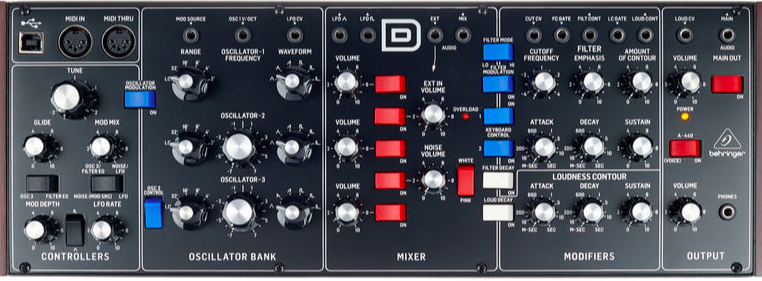
Remember that Crave has keys to input notes, but you’ll need an external keyboard for the Model-D. The Crave is not a Eurorack, but a small desktop synth.
2nd Eurorack: If you’re looking to add on to a basic Eurorack set up, you might think about the Cat or Pro-1. The Pro-1 is very popular and much loved, but we think the Cat is worth considering as well.

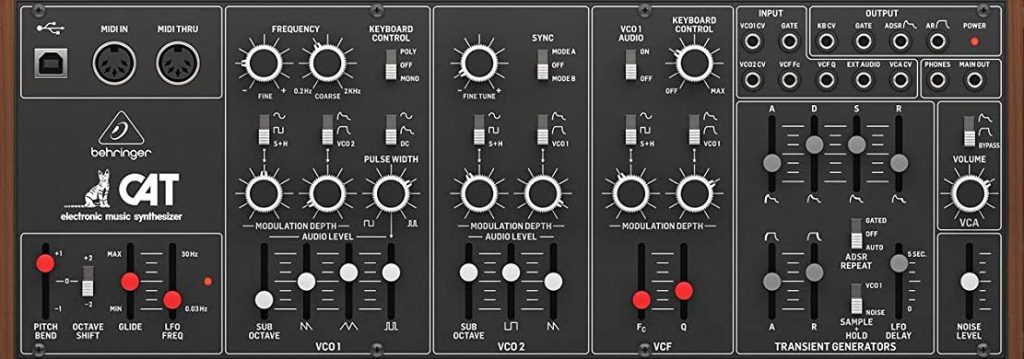
Good combinations: For the same price as a Eurorack, you can get the Crave and TD-3. These are a great pairing since they bring very different sounds to the table.
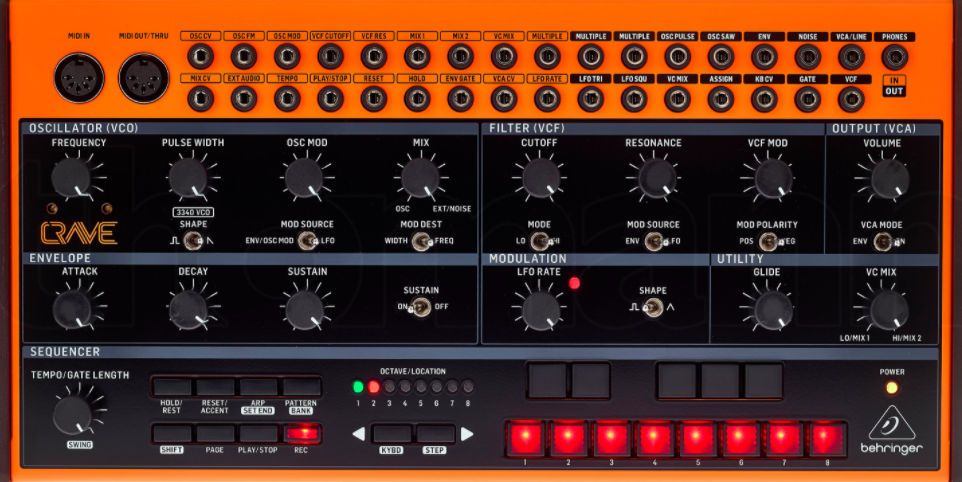
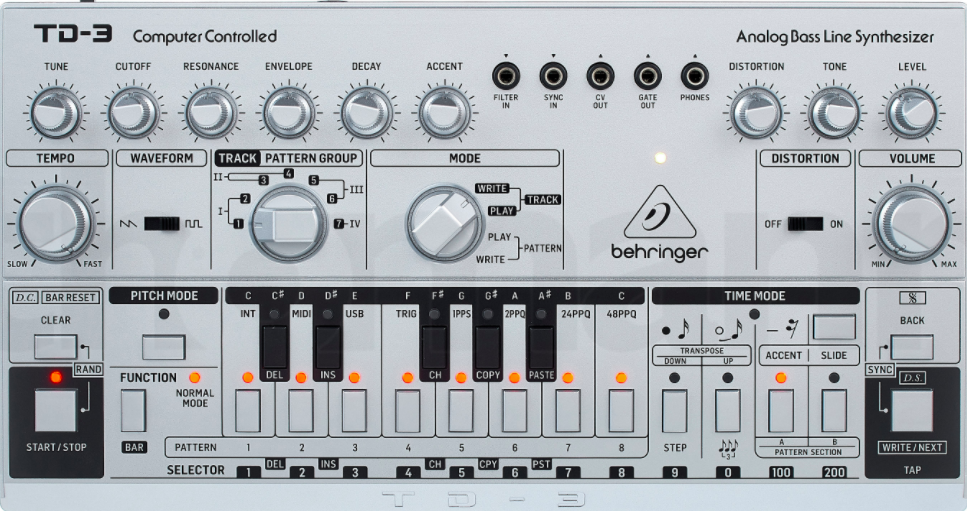
Something that sounds really different:
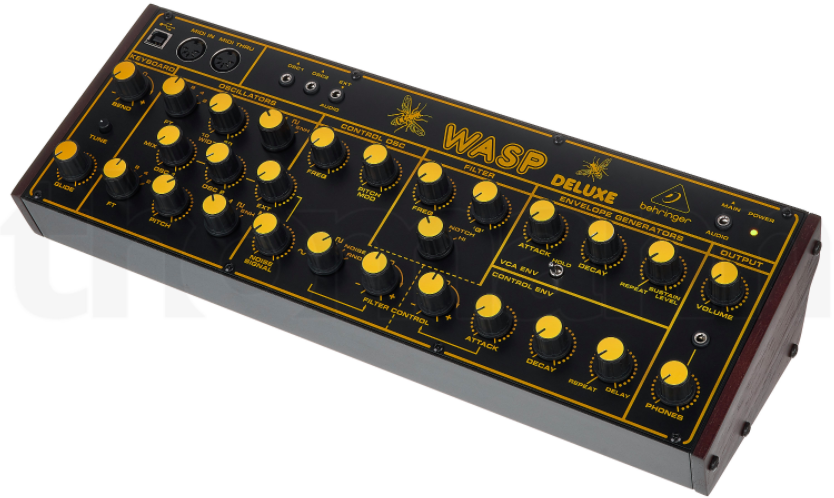
 Wasp Deluxe from Thomann or Amazon
Wasp Deluxe from Thomann or Amazon
And if you don’t fear wires:


Popular Accompanying Gear for Synths
Arturia Keystep
The people’s MIDI keyboard! Cheap, reliable, and built like a tank. You may recognize it from every video tutorial you’ll ever watch.
Zillions of YouTube guides can’t be wrong!
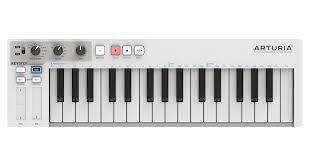
Keystep from Amazon and Thomann
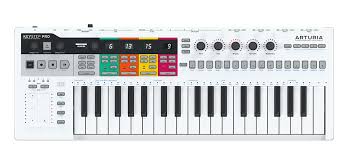
Keystep Pro from Amazon and Thomann
MIDI Merge/Thru Boxes
MIDI-merge box so you can run multiple sequences, synths, etc. together. Kenton makes excellent-quality boxes. Or a simple y-cable might do the trick for you.
Reverb and Delay Pedals
Zoom Multi Stomp MS-70 CDR and MS-50
None of Behringer’s clones has reverb, and only Neutron has delay. These Zoom pedal offers you 100+ effects.
They’re also cheap, and work equally well with guitars.
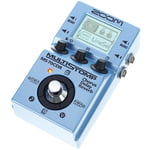
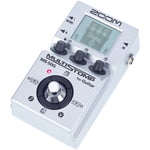
Tip: it’s been discovered that you can hack these Zoom pedals to give you around 300 effects! Here’s the youtube clip showing you how.
TC Electronics Reverb and Delay
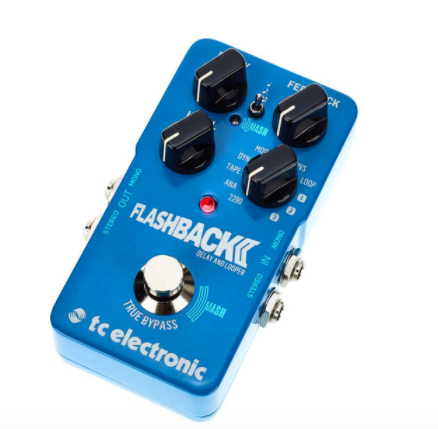
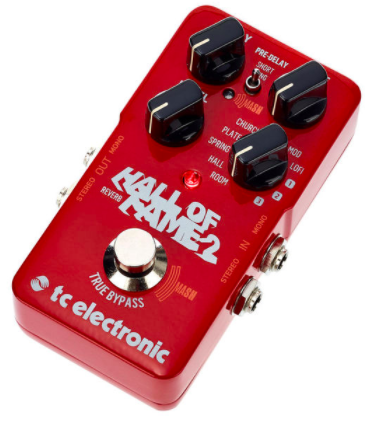
Eurorack Mounts
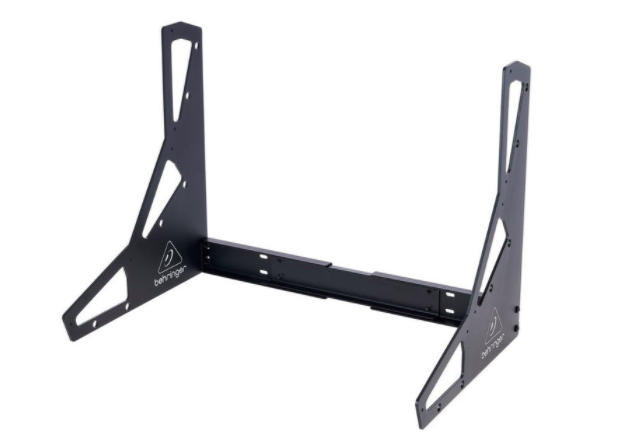
All Behringer Synth Manuals & Editors
This is a list of with links to all of Behringer’s mountable synths listed at Behringer’s official site:
Manuals and guides:
- Cat Starter Guide
- Crave Starter Guide
- K-2 Quick Start Guide
- K-2 Product Information
- Model D Starter Guide
- Model D Manual
- Model D Product Information
- TD-3 Starter Guide
- Neutron Starter Guide
- Neutron Manual
- Neutron Product Information
- Poly D Starter Guide
- Pro-1 Product Information Document
- Pro-1 Starter Guide
- Wasp Deluxe Starter Guide
Synth Editor Software
- Behringer SYNTHTRIBE for Mac V2.4.3
- Behringer SYNTHTRIBE for Windows V2.4.3
- Behringer SynthTool for Mac V2.0.0
- Behringer SynthTool for Mac V2.1.0
- Behringer SynthTool for Mac V2.2.0
- Behringer SynthTool for Mac V2.3.3
- Behringer SynthTool for Mac V2.3.4
- Behringer SynthTool for Mac V2.3.5
- Behringer SynthTool for Mac V2.3.6
What about Synth VSTs and Plugins?
To move in the complete opposite direction, Arturia has produced some outstanding plugins that cover all the sounds we’ve reviewed here (and more). Their V Collection 7 has 25 virtual instruments covering synths, pianos, electric pianos, and more.
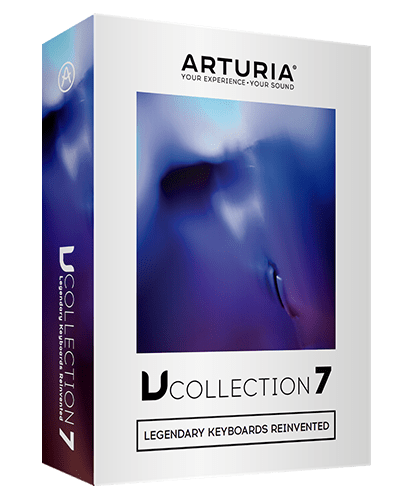
Features
- Includes 24 software titles: Mellotron V, Synthi V, CZ V, Analog Lab, Clavinet V, CMI V, DX7 V, Buchla Easel V, Synclavier V, B-3 V, Mini V, Piano V, Stage-73 V, Matrix-12 V, Farfisa V, Solina V, SEM V, Wurli V, Jup-8 V, ARP 2600 V, CS-80 V, Prophet V, VOX Continental V, Modular V
- Each virtual instrument in the V Collection can be used as a stand-alone application or as an NKS (except Analog Lab, Mellotron V, Synthi V, CZ V and B-3 V), VST, AU or AAX plug-in
- High-resolution graphic interfaces, compatible with very large displays
- All instruments share a common interface for browsing, editing (save, import, export, …)
- Easy MIDI mapping to any keyboard controller.
- In-app tutorials allowing to quickly understand the instruments.
- Easy install and licence manager: Arturia Software Center.
- More than 8000 high-quality and innovative sound presets.
- Analog Lab – All presets of the V Collection 7 can be browsed and edited from a single interface
- Arturia’s proprietary technologies, TAE® and Phi, ensure that each instrument sounds and behaves exactly like the original.
Conclusion
Behringer knocks the ball out of the park time after time with these synth clones. In terms of price and reliability, they stand out strong against nearly all of the synths they’re modeled after.
The sound quality is excellent, and they’re often indistinguishable from the originals.
They are continually in demand and have good resell value. While Behringer isn’t excellent with providing updates, there are great communities for sharing tips and problem solving together.
There have been some consistent issues with tracking across octaves (not that that’s new to 80’s synths). And there is the reality that you can’t save your patches.
Still, in terms of a diversity of very different sounding synths that are well-built, Behringer keeps coming out strong. There’s little sign that they’re letting up, so we’re all excited to see what’s next!
References
Reidy, Tess. “Retro electronics still popular – but why not just use modern software?”. The Guardian. February 15, 2014.
Thanks for reading! If this was useful for you, please consider supporting the site through Paypal.
If you could please use the links, it’ll help the site out (and you still get normal prices). Thanks!
Disclosure: Sound-EconoMix is a participant in the Amazon Services LLC Associates Program, an affiliate advertising program designed to provide a means for us to earn fees by linking to Amazon.com and affiliated sites.


